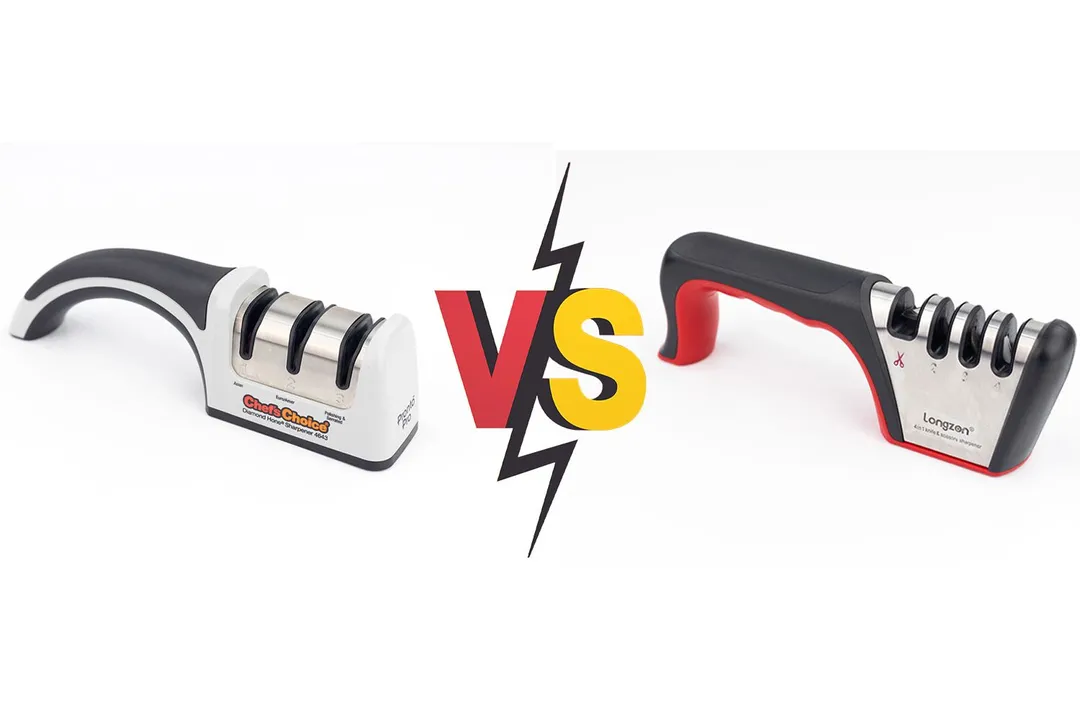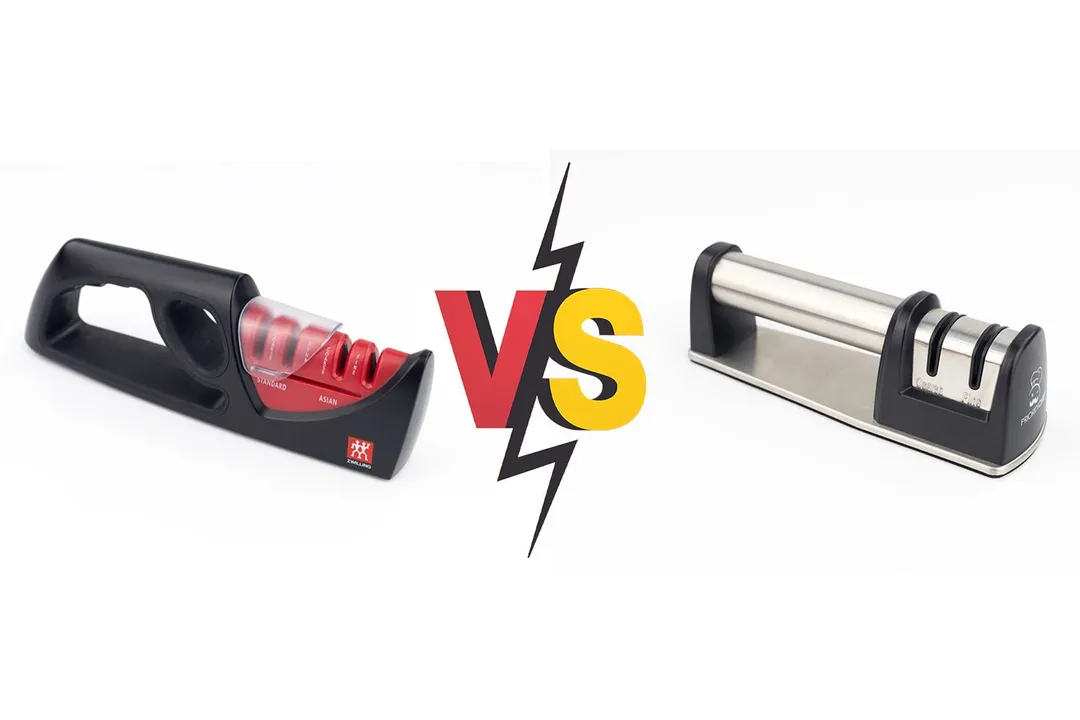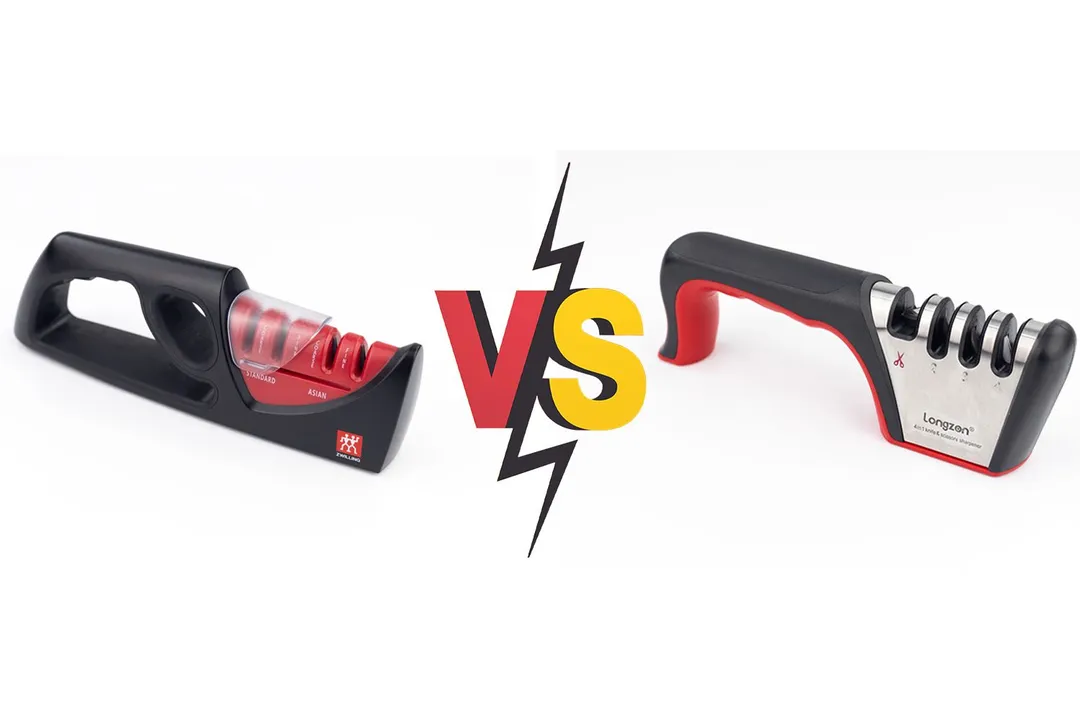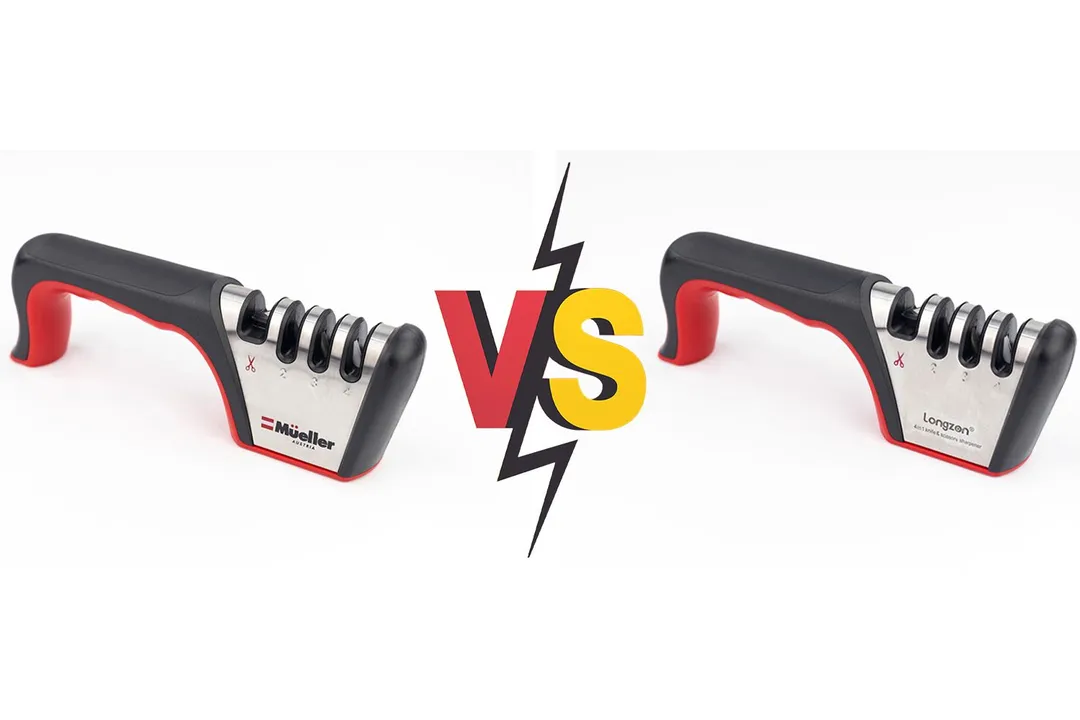Our recommendations are made independently through Research & Testing. We may receive commissions from purchases made via our links.
PriorityChef 2-Stage Sharpener vs. Longzon 4-Stage Sharpener Side-by-Side Comparison
Here we test and compare the PriorityChef 2-stage vs. the Longzon 4-stage sharpener. Read to see how they measure up.
PriorityChef
Tested Using Methodology v1.1Longzon 4-stage
Tested Using Methodology v1.1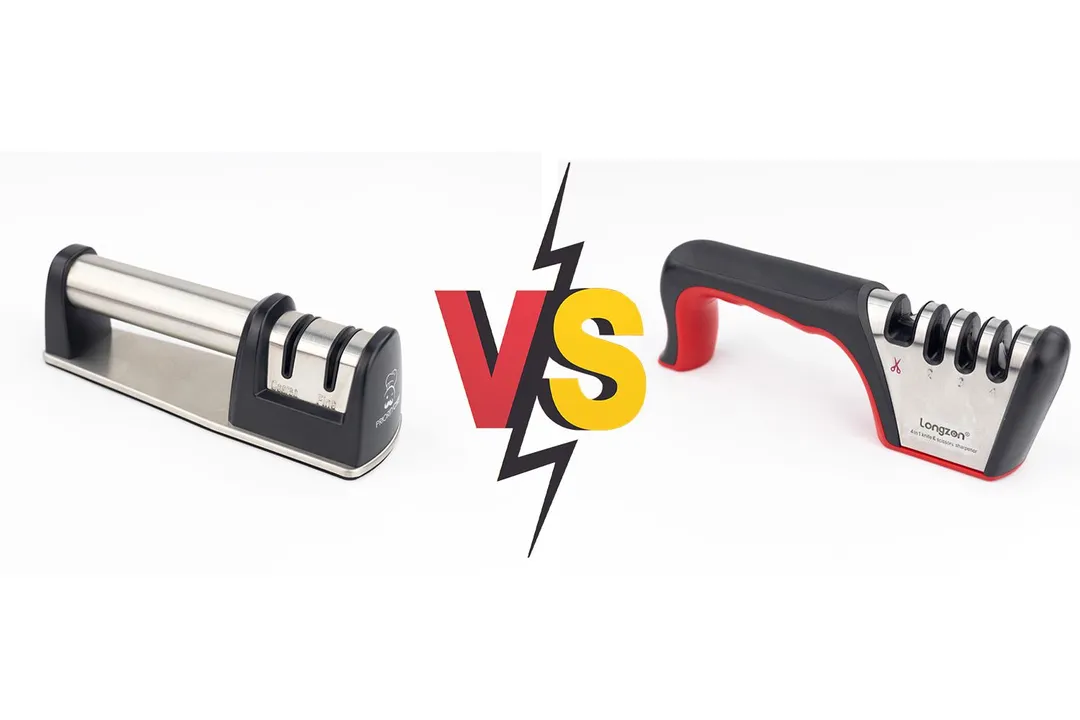
Overall Verdict
The PriorityChef 2-stage and the Longzon 4-stage sharpener have a lot in common, but when it comes to effectiveness, the former has an edge.
Both sharpeners are well-designed with no deal-breaking faults. The PriorityChef has a lower center of gravity, while the Longzon boasts a more substantial body and a separate slot for scissors.
Neither device shaved a noticeable amount of material from the knife edge. You will get a decent edge with either, though the Longzon’s will be finer and smoother.
Despite having only two sharpening slots, the PriorityChef could sharpen faster and to a higher level of keenness. These are deciding factors when it comes to convenient sharpeners, so the PriorityChef is the obvious choice for us.
Pros & Cons
- Modest height, low center of gravity
- Full, flat base
- Gimmick-free design
- Great edge retention
- Sleek design
- Substantial, accommodative size
- Fine, smooth knife edge
- Inclusion of protective gloves
- Slot for scissors
- Cheap base pad
- Small slot openings
- Tall base
- Slow sharpening
- Ineffective slot layout
Key Specs
Where to Buy
*You help support HealthyKitchen101's product testing and reviews by purchasing from our retail partners.
Analysis and Test Results
Performance
Sharpening Time to Cut a Lemon
Material Retention
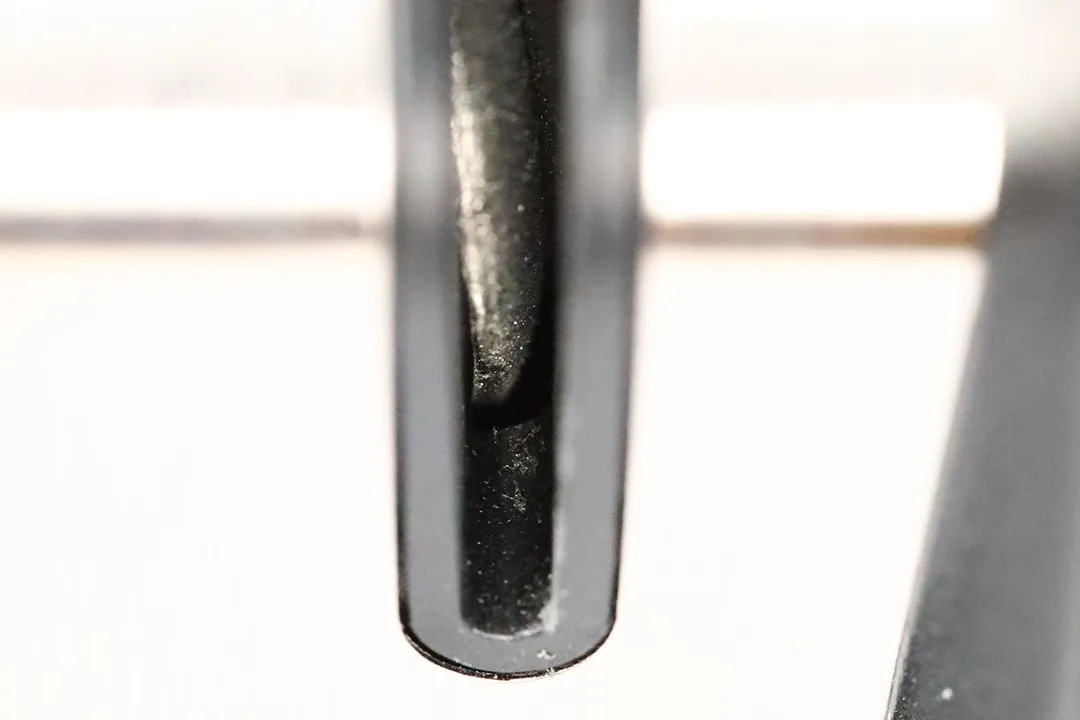
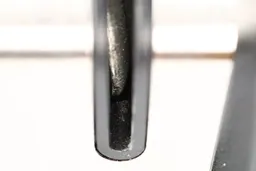
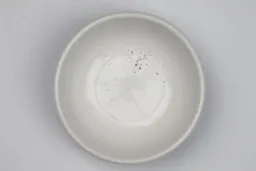
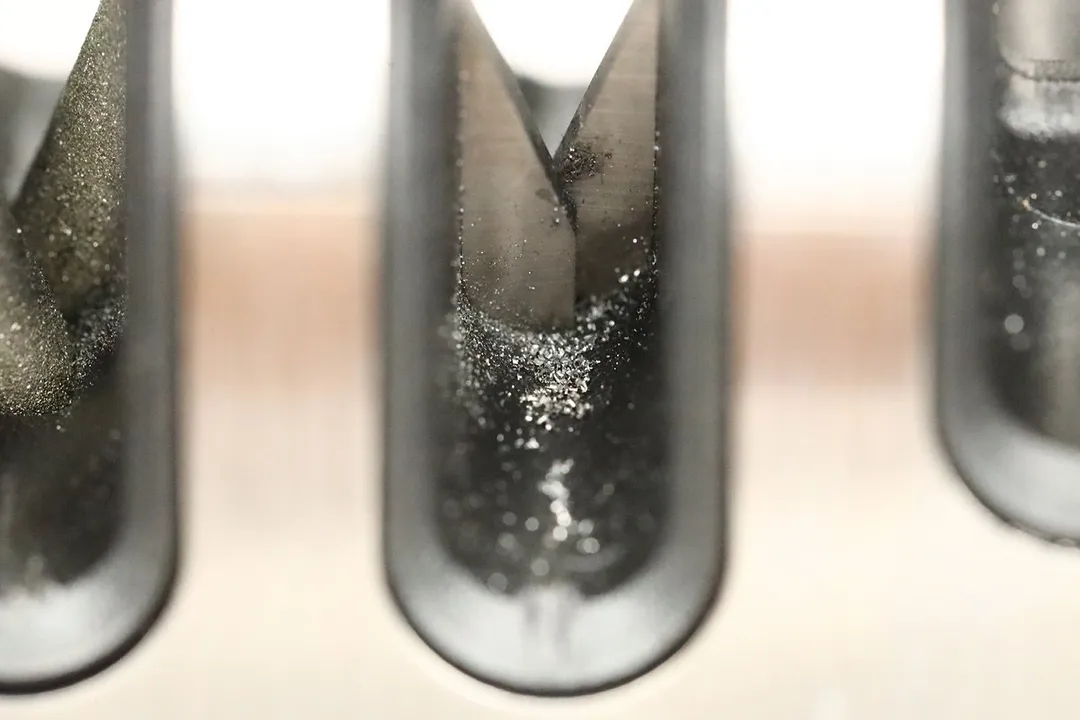

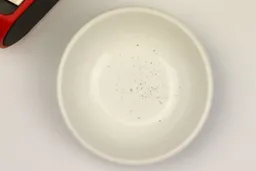
Maximum Sharpness Achieved
Edge Smoothness
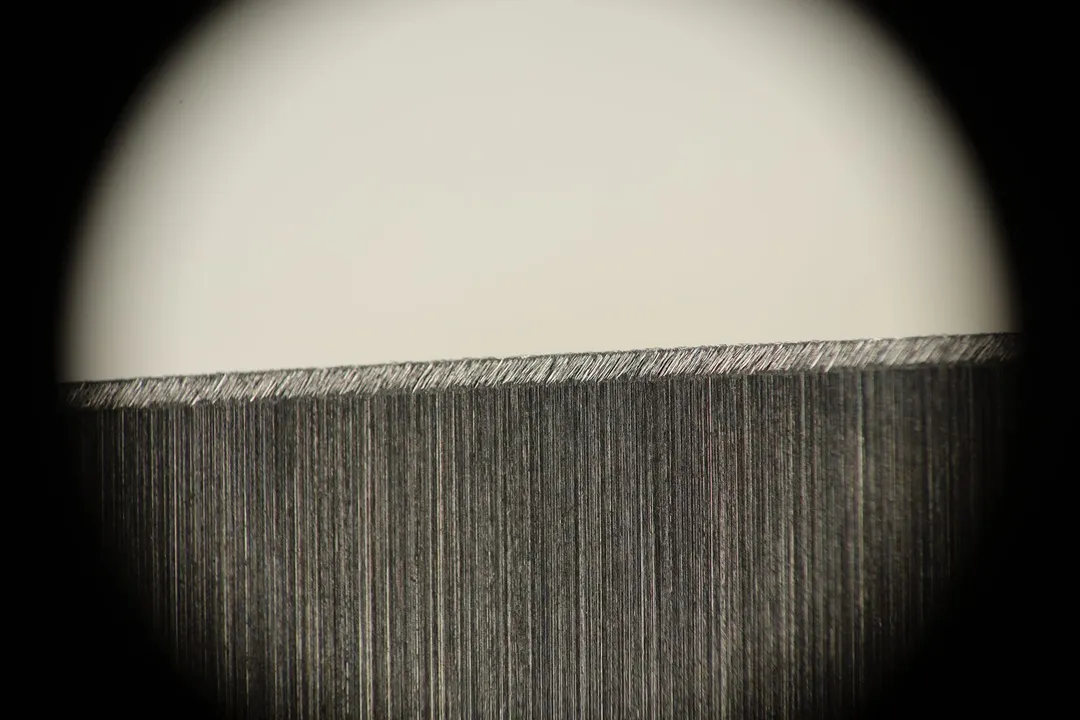
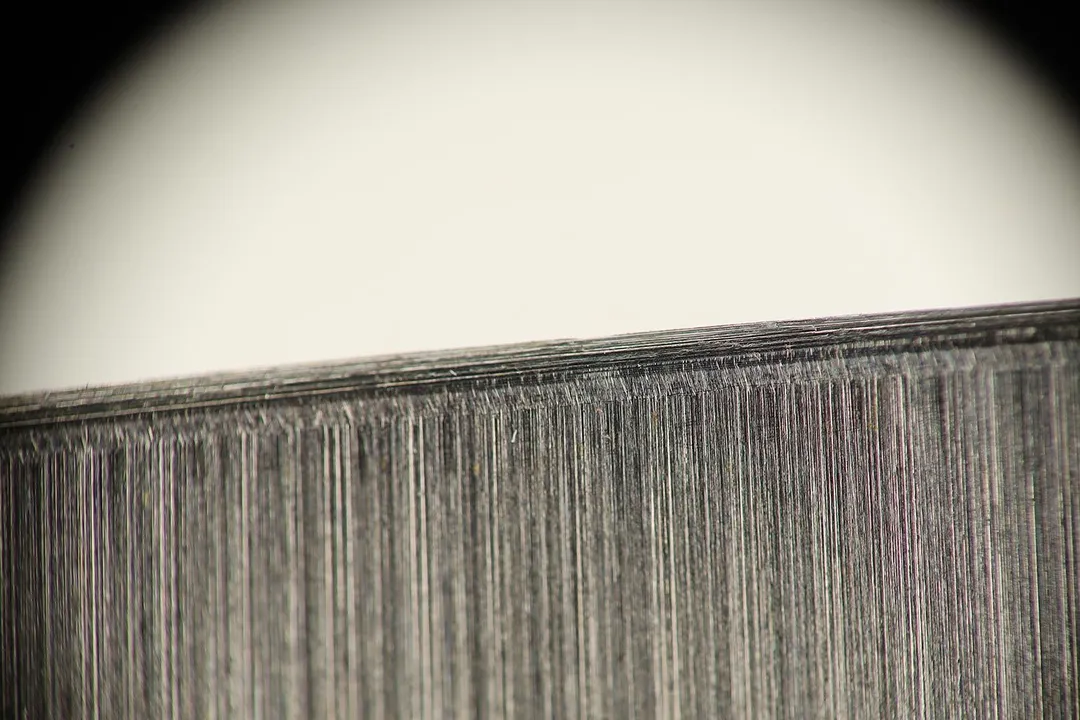
Design
In the Box
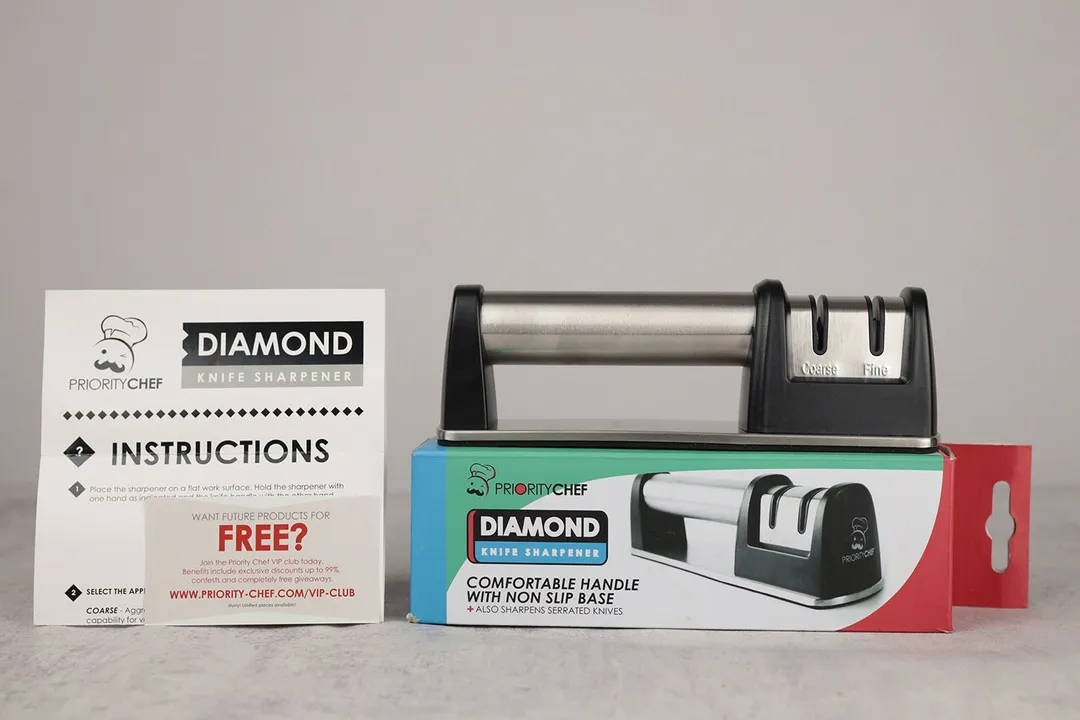
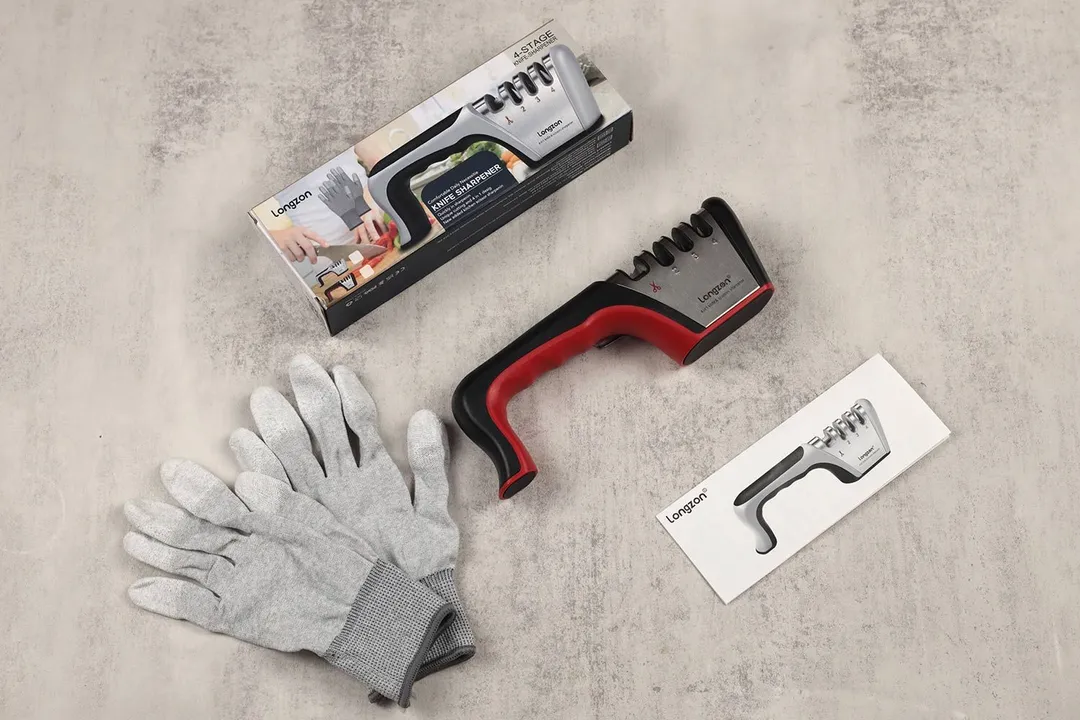
Dimensions
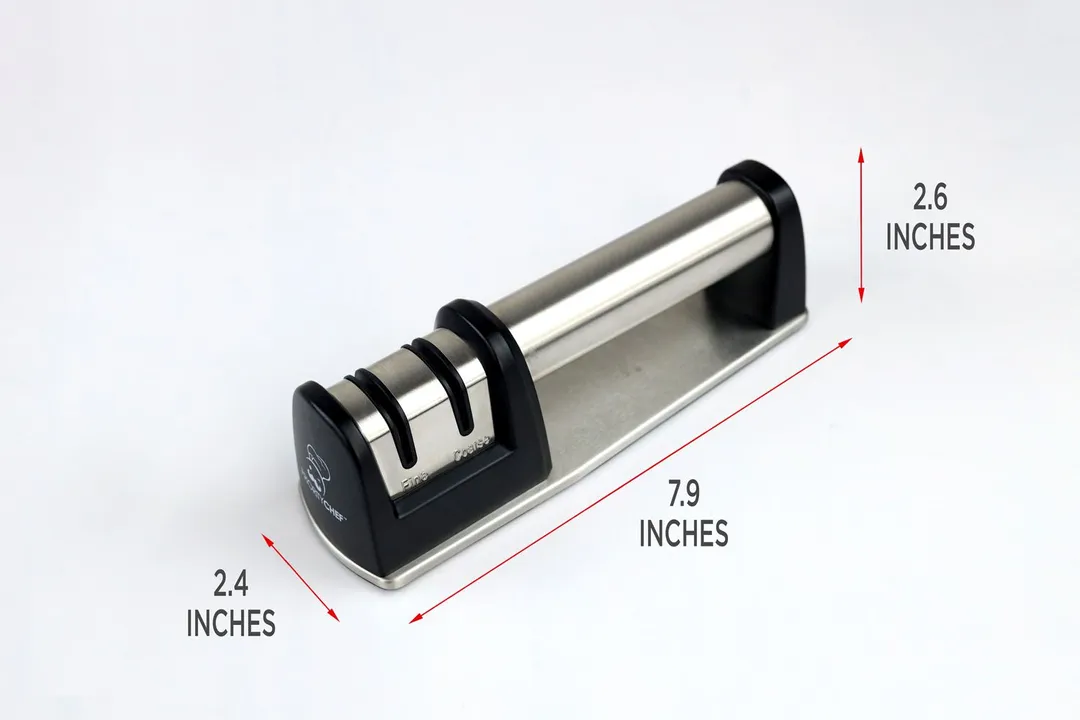
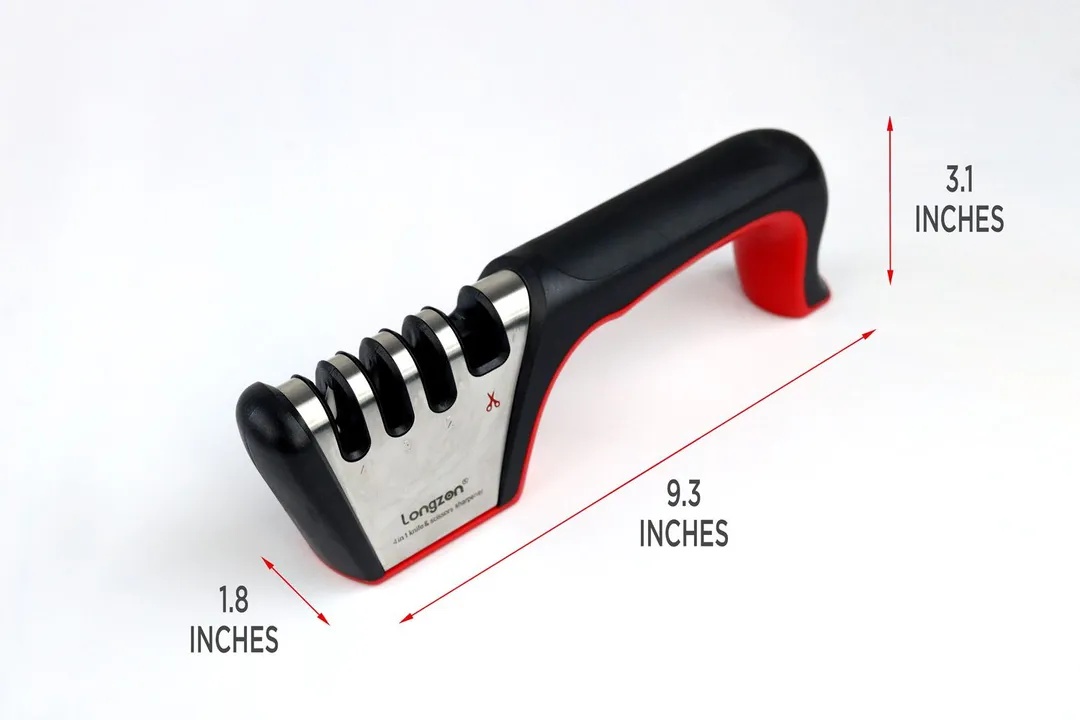
Build Quality
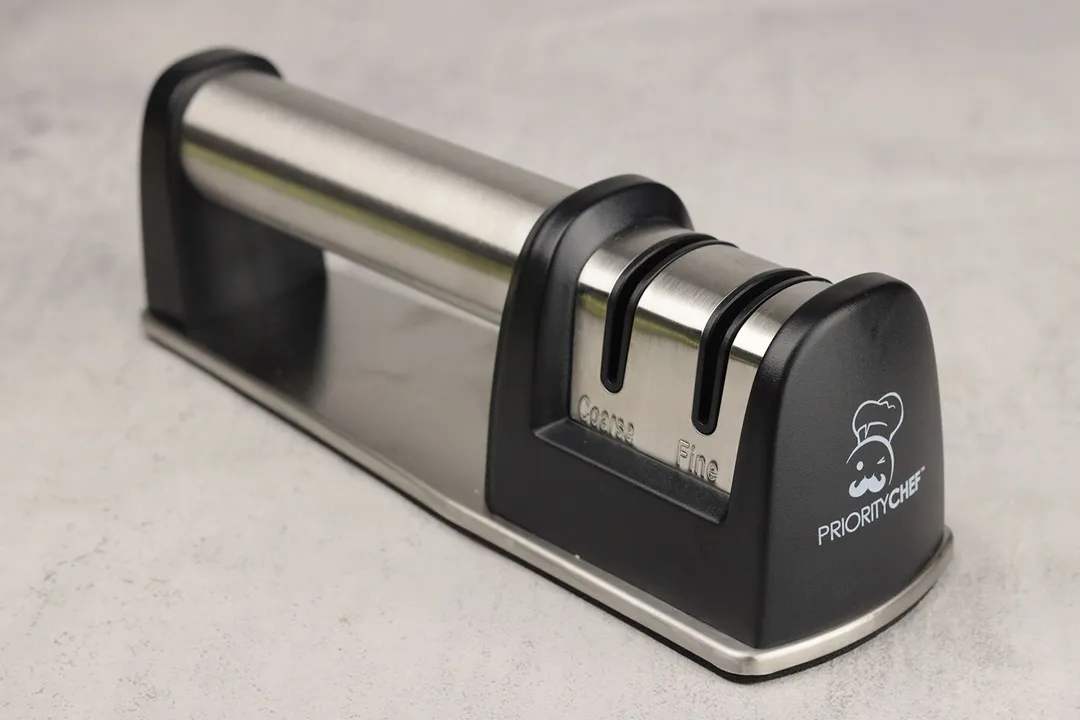
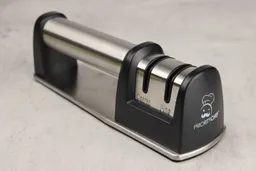


Working Section
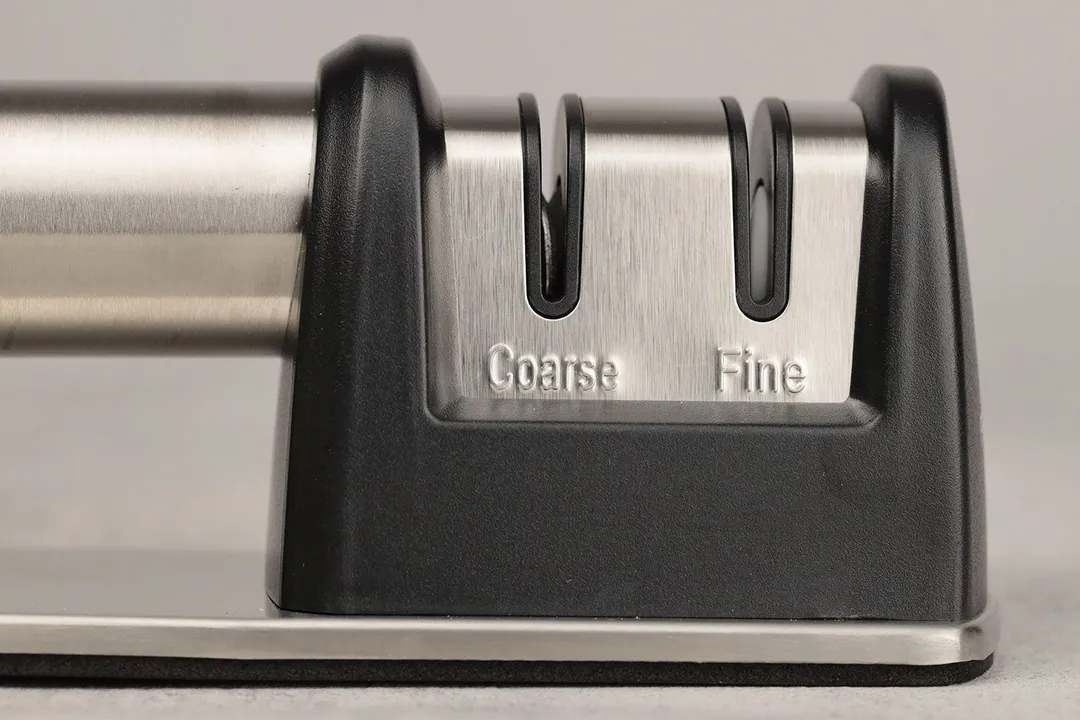
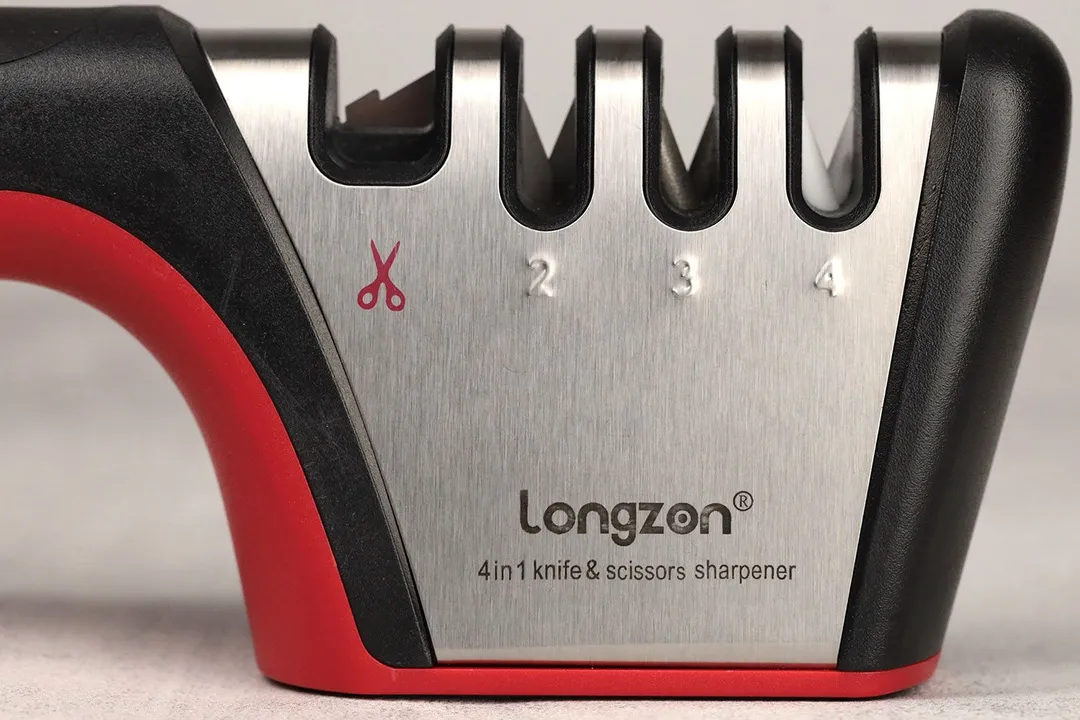
Base
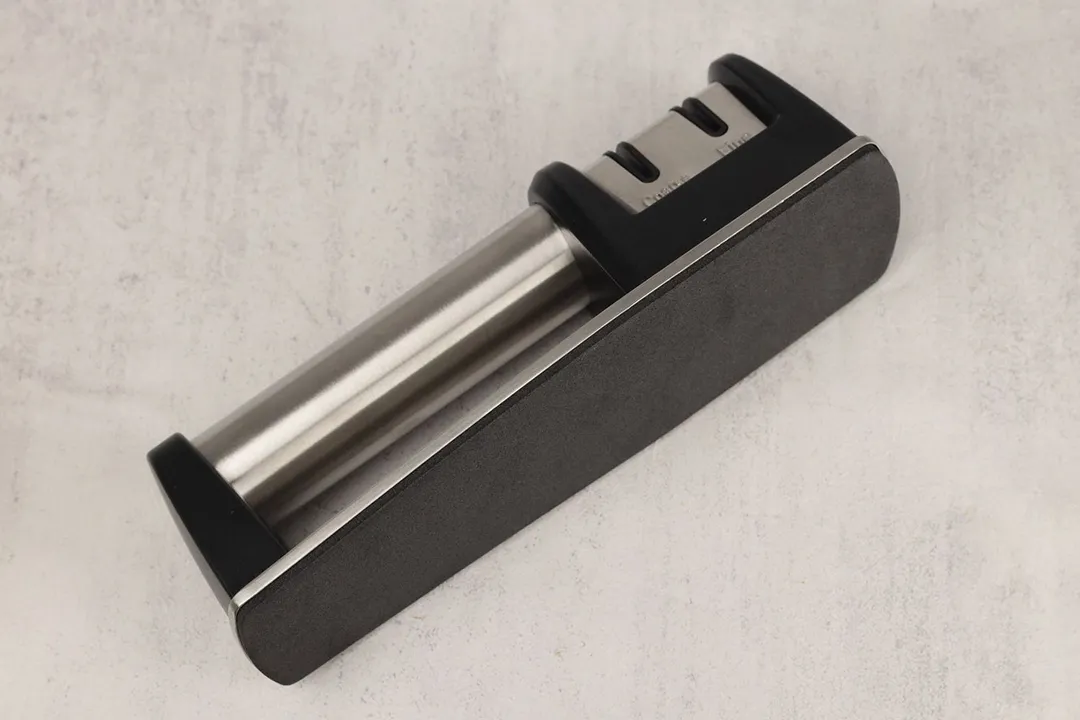
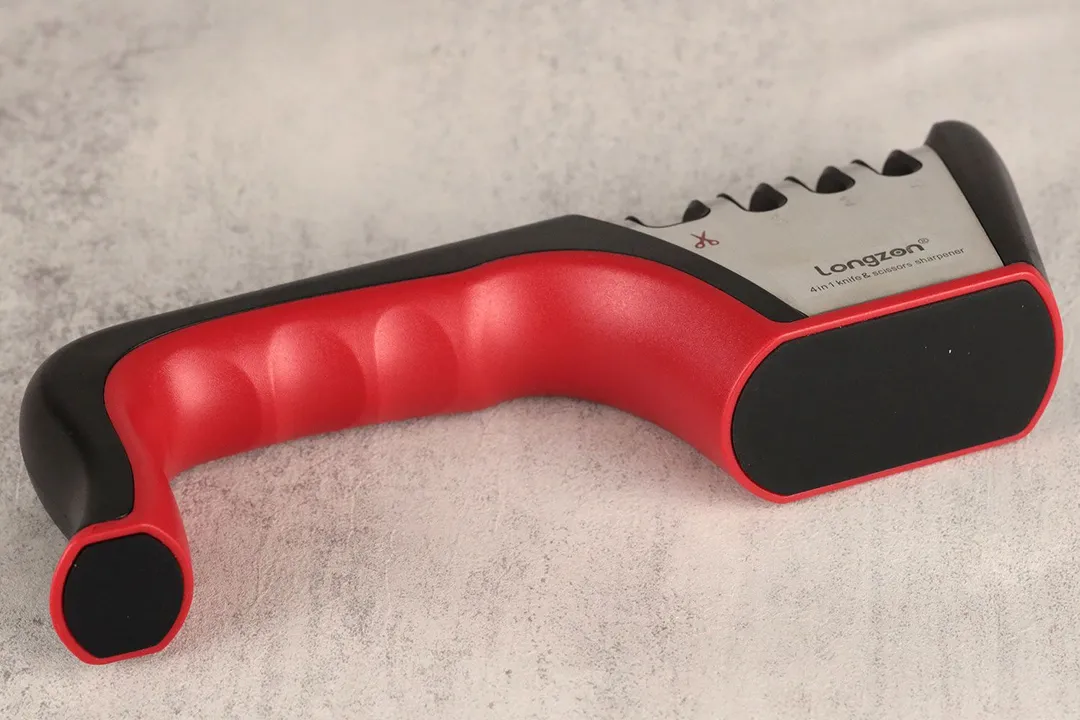
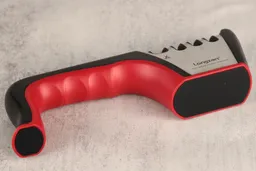
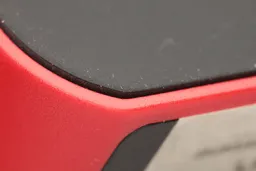
Grip
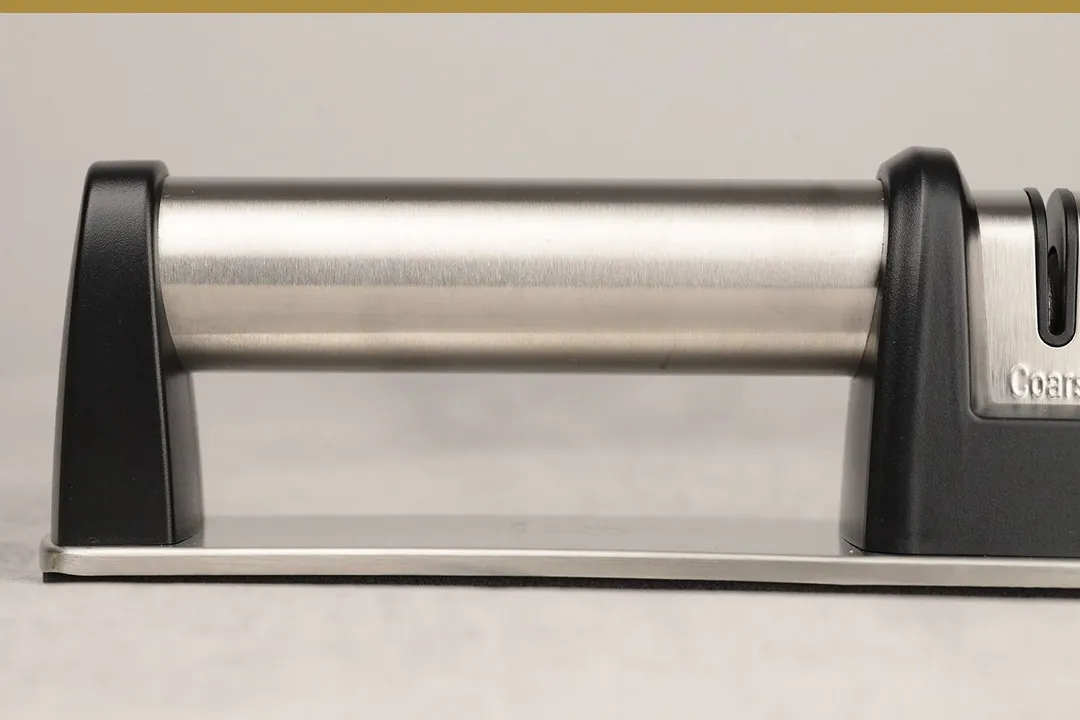
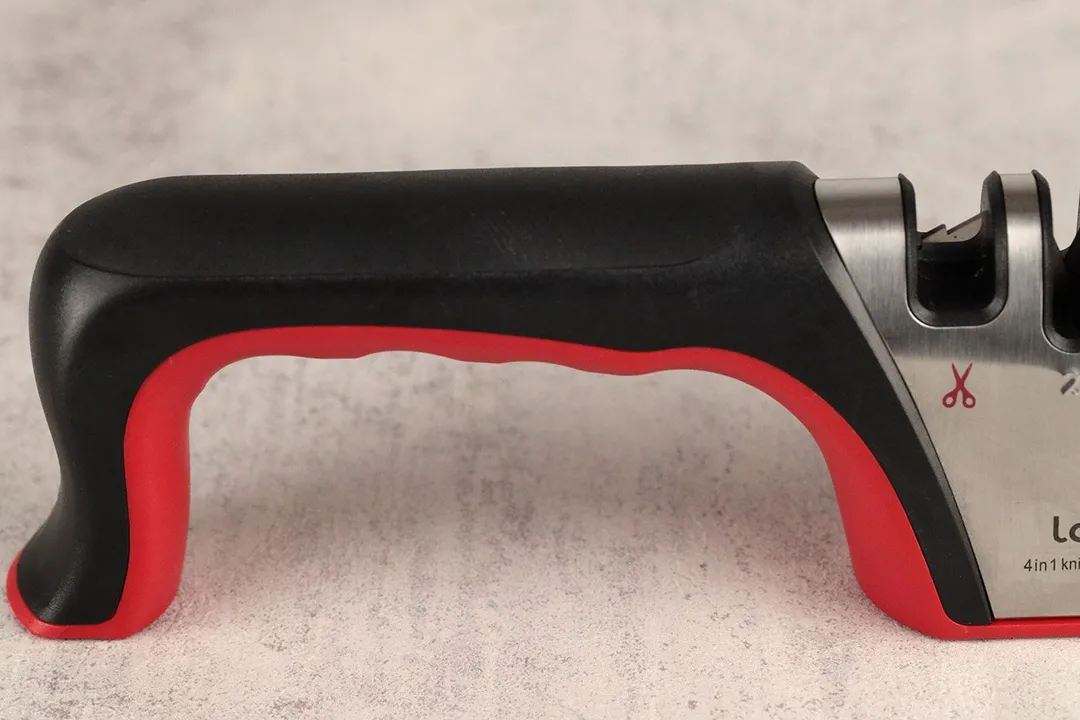
Usability
Slot Arrangement

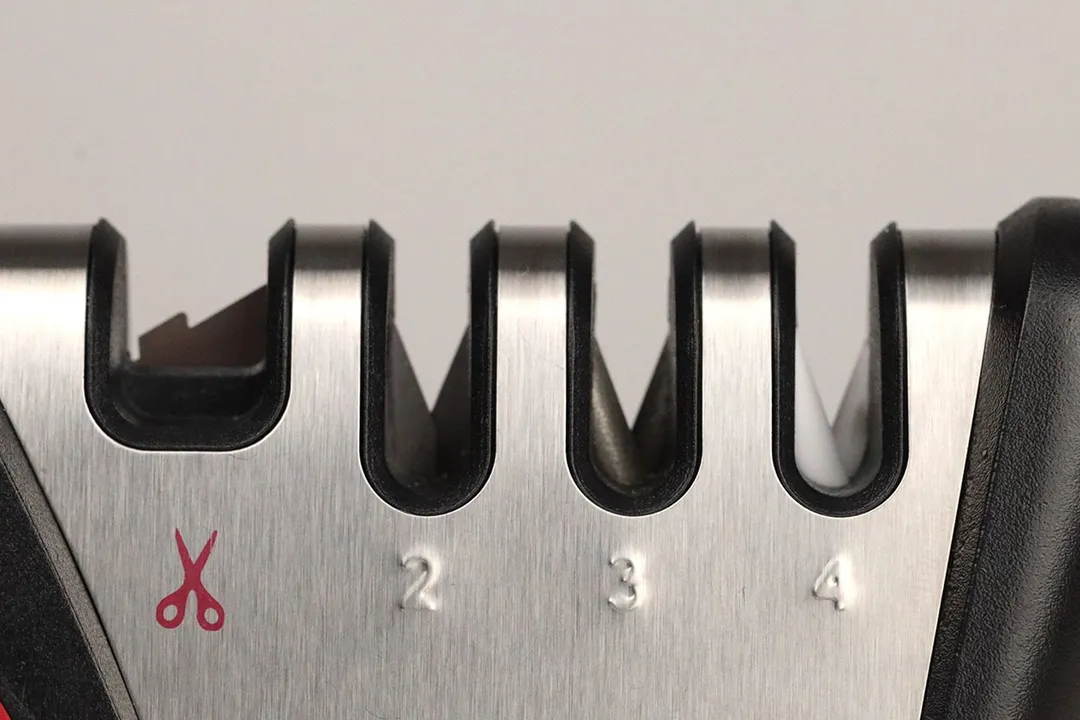
Insertion
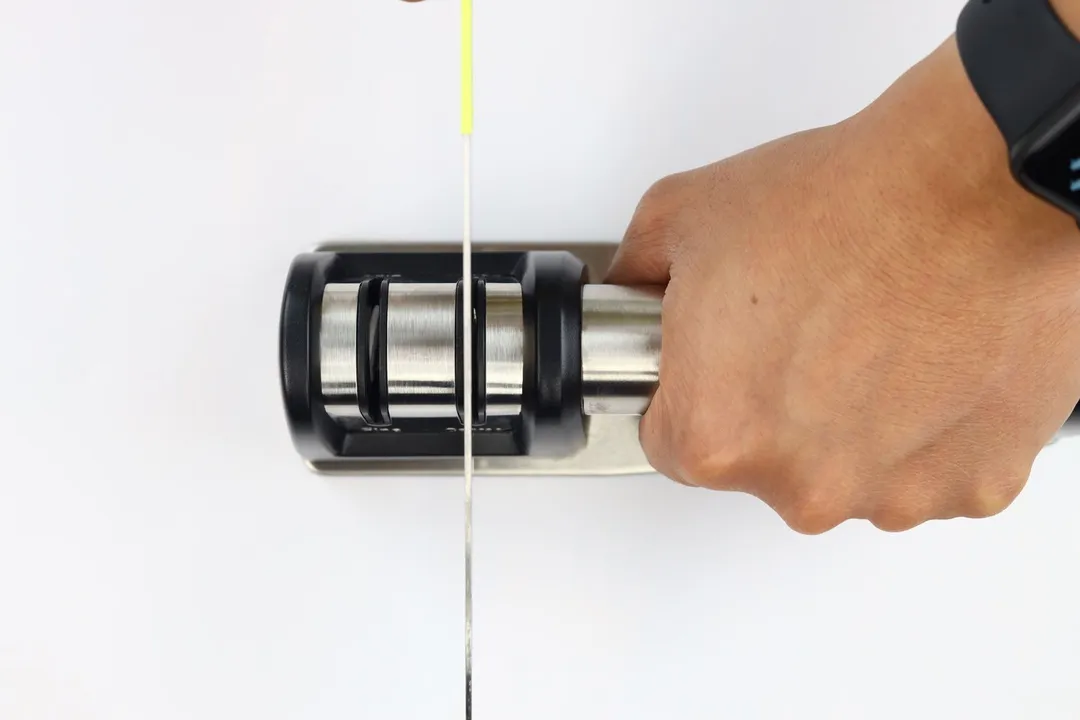
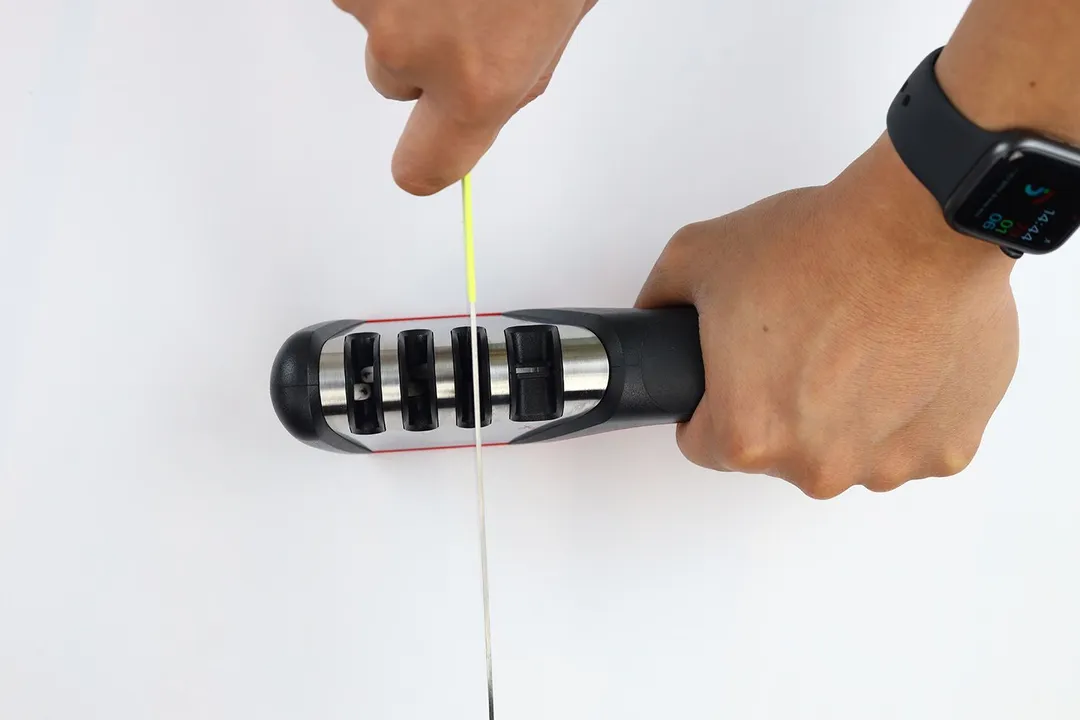
Pulling Through
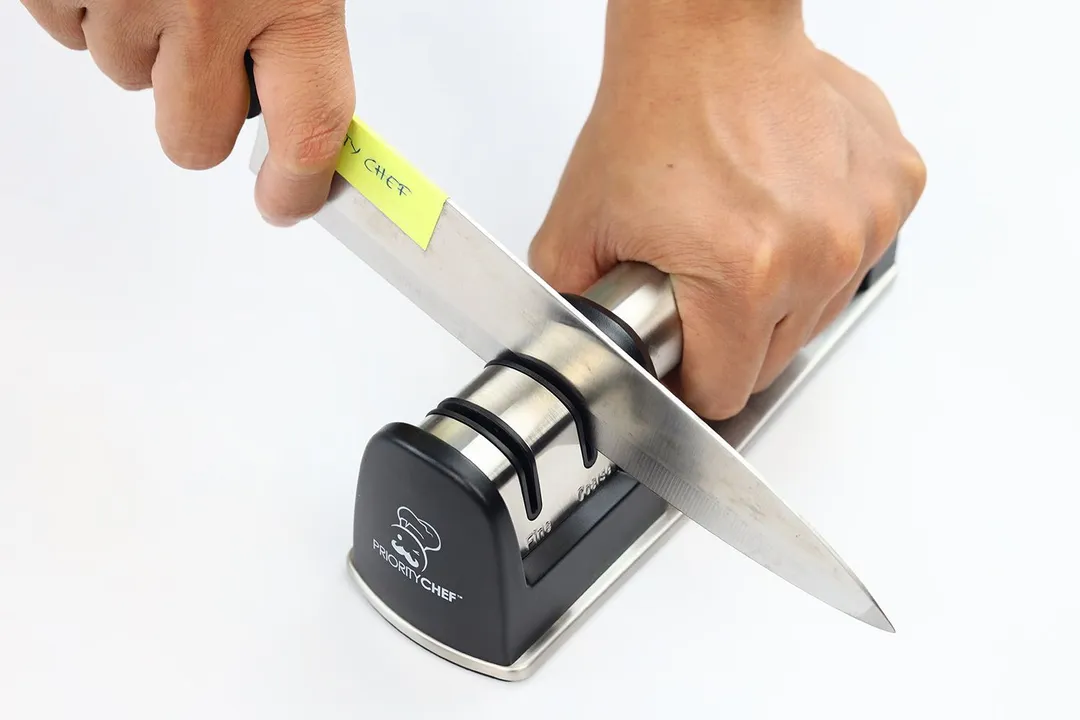
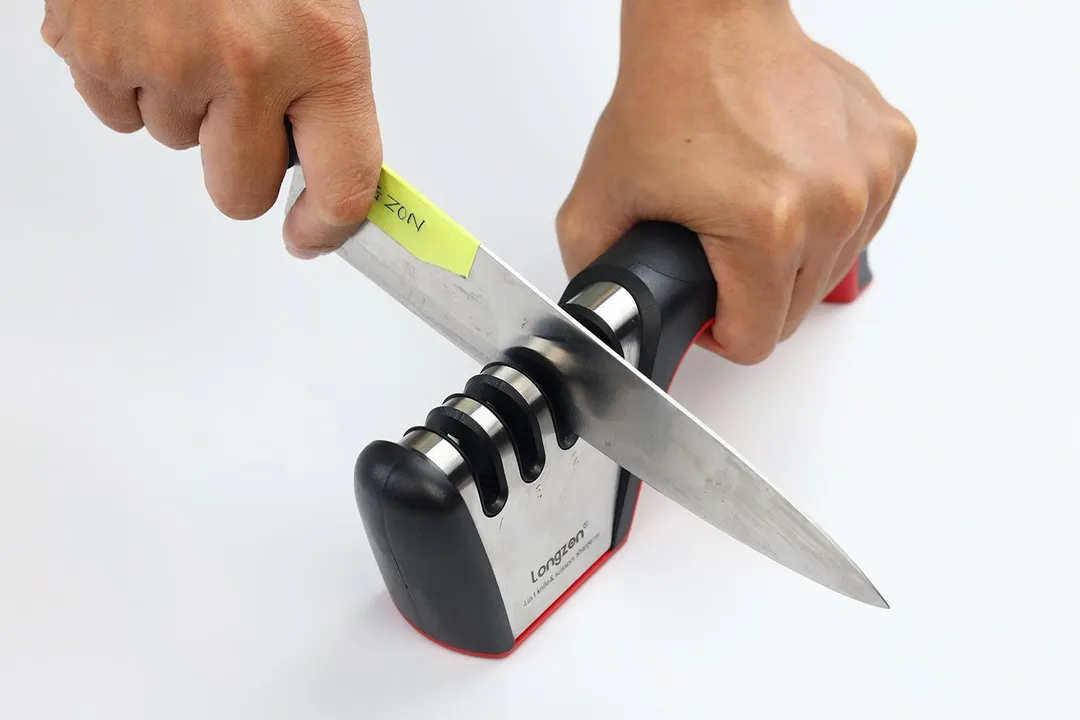
Stability on a Clean Surface
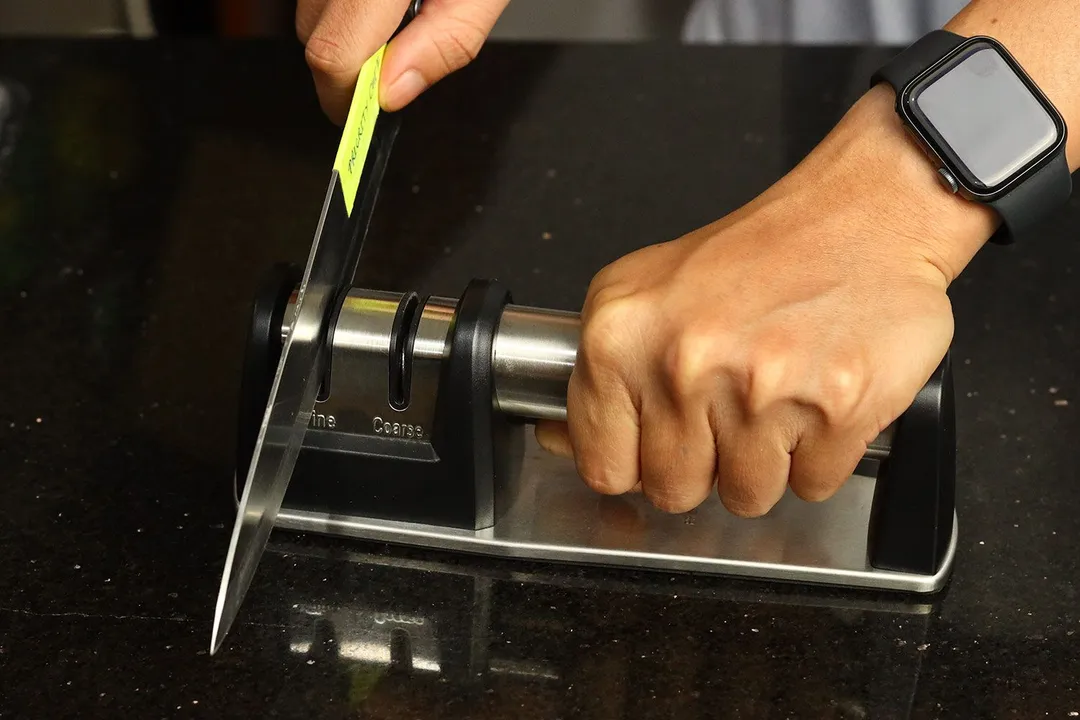
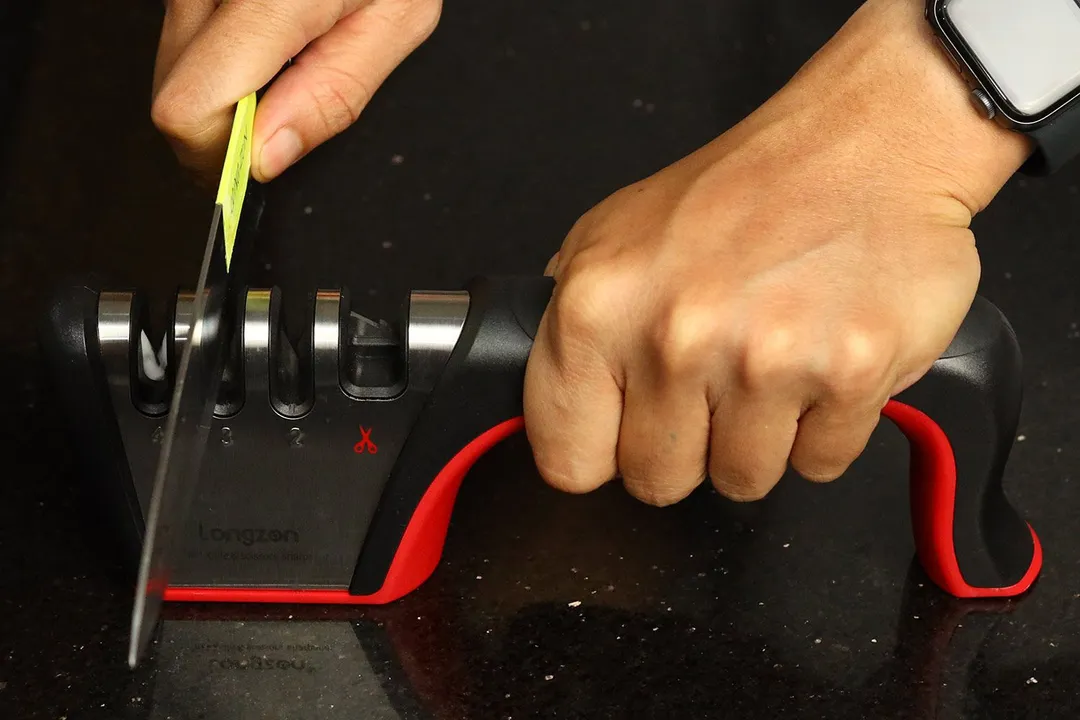
Stability on a Wet and Dirty Surface

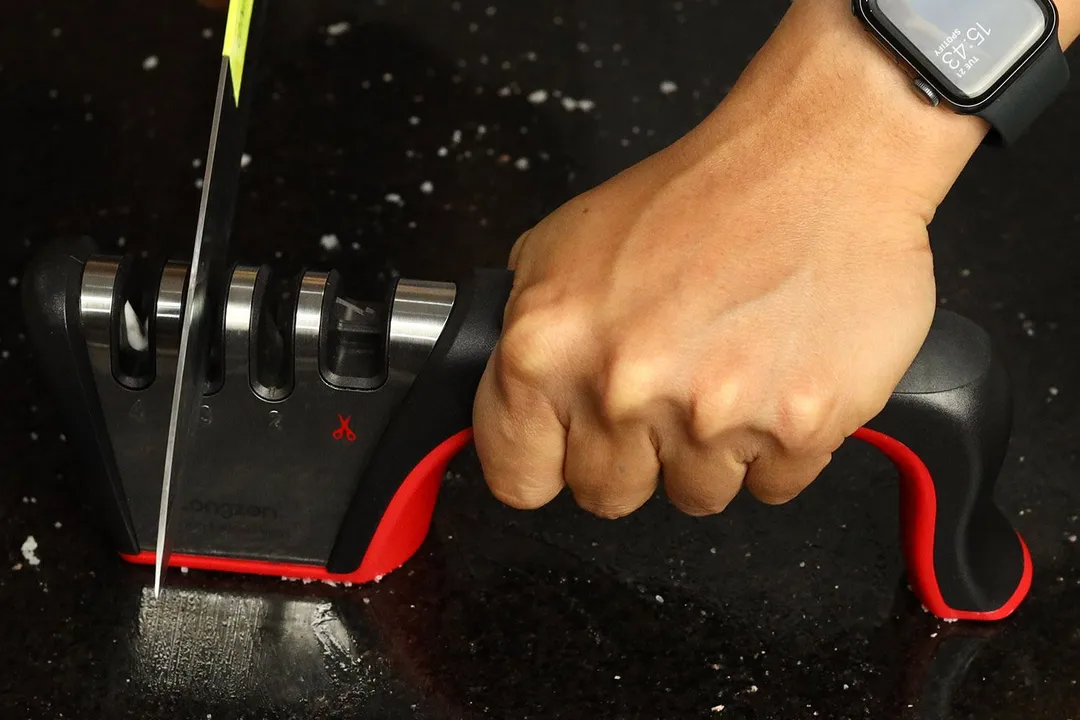
Behind the Comparison
Anh Ngo is a writer with 9 years experience at different media outlets, covering from public news and events to product testing and analysis. At HealthyKitchen101, she works across different departments, communicating closely with its network of writers, editors, and health, tech, and search engine experts to provide a meaningful and pleasant reading experience for visitors.
Lap is Head of the Research, Testing, and Review Team (RTR Team) at HealthyKitchen101.com, where he directs and supervises the testing of kitchen gadgets and appliances.
Nguyen Ntk is a graphic designer, photographer, and videographer whose philosophy centers around respecting and celebrating the beauty of reality. Through his lenses, Nguyen strives to capture the true essence of objects and events, showcasing and highlighting authentic features without distortion or exaggeration.




